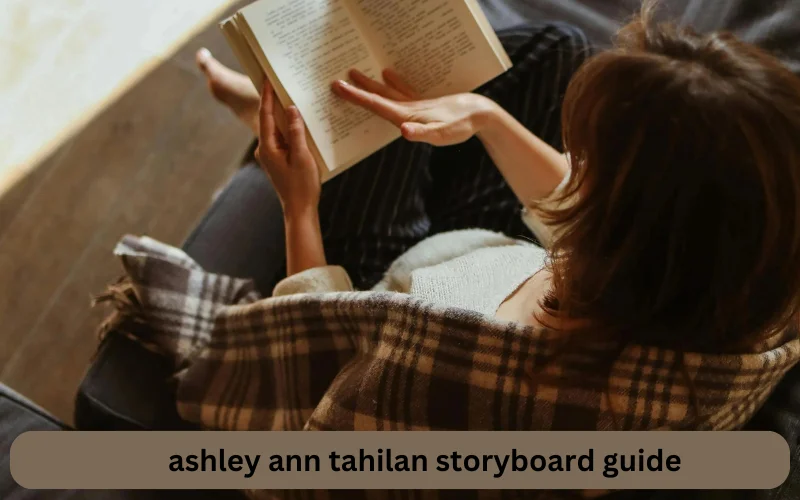Storyboarding is an essential tool in the creative process for filmmakers, animators, and even content creators. One name that often surfaces in this context is Ashley Ann Tahilan, known for her comprehensive approach to storyboarding. Whether you are a beginner or an experienced artist, her storyboard guide can help simplify the process and improve your visual storytelling. In this article, we will dive into the details of the Ashley Ann Tahilan storyboard guide, exploring the steps and strategies she suggests for creating effective and engaging storyboards.
What Is Storyboarding?
Definition of Storyboarding
Storyboarding is the process of visually planning out scenes before you start filming or animating. It involves creating a sequence of drawings or images that represent the shots of a film, animation, or project.
Importance of Storyboarding
Storyboarding helps visualize your ideas and provides a roadmap for your project. It ensures that everyone on the team is on the same page, saving time and effort in the production process. This is especially important for larger projects, where clarity is key.
Introduction to Ashley Ann Tahilan’s Storyboard Guide
Who Is Ashley Ann Tahilan?
Ashley Ann Tahilan is an experienced storyboard artist who has worked on various creative projects, ranging from films to digital media. She has developed a detailed storyboard guide that offers a step-by-step approach to help both beginners and advanced creators. Her methods focus on clarity, flow, and storytelling precision.
Why Follow Her Storyboard Guide?
Tahilan’s approach to storyboarding is user-friendly, offering practical tips that are easy to follow. Her guide simplifies the creative process, making it accessible for people at any skill level. Whether you’re new to storyboarding or looking to refine your skills, her advice helps you create storyboards that communicate your vision effectively.
Steps to Create a Storyboard: The Ashley Ann Tahilan Way
1. Define the Purpose of Your Storyboard
Before you start drawing, it’s essential to understand the purpose of your storyboard. Whether it’s for a commercial, film, or a simple YouTube video, the storyboard needs to align with the message and theme of your project.
- Key Question: What story are you trying to tell?
- Tip: Keep your audience in mind as you create.
2. Break Down the Script or Idea
In Tahilan’s guide, the next step is to break down the script or idea into scenes. This involves identifying key moments that need to be visually represented.
- Tip: Focus on major transitions, emotional beats, and action points.
3. Start Sketching
Once you’ve outlined the key scenes, begin sketching your storyboard. According to Ashley Ann Tahilan, you don’t have to be a perfect artist. The goal is to get your ideas down on paper.
- Tip: Use stick figures or simple shapes if you’re not confident in your drawing skills.
4. Focus on Shot Composition
Shot composition is crucial in storyboarding. Tahilan emphasizes using a variety of shot types (close-ups, wide shots, etc.) to keep the visual narrative engaging.
- Related Keywords: camera angles, frame composition, shot types.
5. Add Notes and Direction
Your storyboard should include notes and directions for each frame. These notes can explain actions, camera movements, or any important details that aren’t immediately obvious in the sketches.
- Tip: Make sure your notes are concise but clear.
6. Review and Revise
Tahilan advises taking time to review your storyboard once it’s done. Share it with other team members or stakeholders and gather feedback. Revisions are a natural part of the creative process.
- Tip: Don’t be afraid to cut or change scenes if they aren’t working.
Tips for Effective Storyboarding from Ashley Ann Tahilan
Use Visual Hierarchies
Creating a visual hierarchy in your storyboard ensures that important elements stand out. Tahilan’s guide encourages emphasizing key moments in your sketches through size, placement, and shading.
Prioritize Simplicity
You don’t need elaborate drawings for a good storyboard. Simplicity is key. Focus on conveying ideas efficiently, rather than making each frame a work of art.
Common Mistakes to Avoid in Storyboarding
Overcomplicating the Frames
One common mistake is making the storyboard too detailed, which can slow down the production process. Keep it simple and to the point.
Forgetting to Add Notes
Even if your drawings are clear, always include notes. Without direction, the storyboard may be misinterpreted.
Tools Recommended by Ashley Ann Tahilan for Storyboarding
Tahilan recommends several digital tools that simplify the storyboarding process. Some of these include:
- Storyboarding Software: Like Storyboarder and Toon Boom Storyboard Pro.
- Drawing Tablets: Wacom and Huion are popular choices for digital artists.
Wrapping Up: Why Follow the Ashley Ann Tahilan Storyboard Guide?
Storyboarding is an essential part of visual storytelling. By following the Ashley Ann Tahilan storyboard guide, you’ll be able to create clear, effective storyboards that make your creative process smoother and more efficient. Her approach simplifies storyboarding, making it accessible even if you’re just starting. Whether you’re working on a major film project or a small YouTube video, Tahilan’s guide will help you bring your vision to life.
Final Thought
Remember, a storyboard is not just about drawing—it’s about communicating a story visually. Using this guide can streamline your workflow and improve your overall storytelling.
